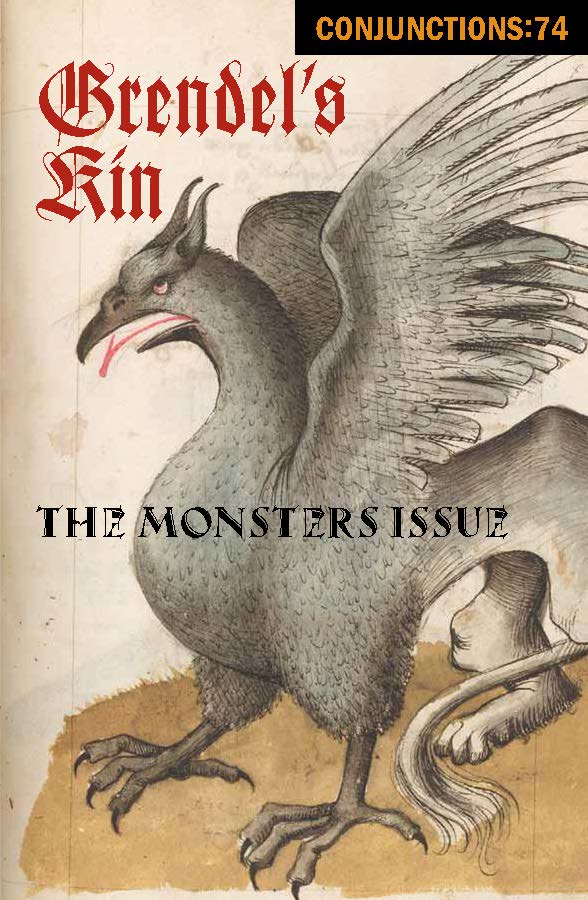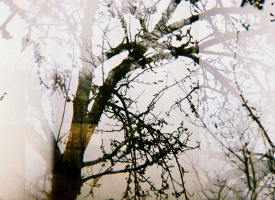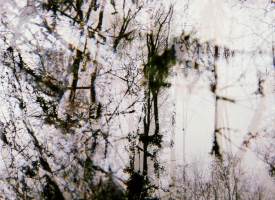February 25, 2020
My new essay-poem-story “Wherever Thou Wilt Touch a Bruise Is Found” is forthcoming in print – Conjunctions:74, Grendel’s Kin: The Monsters Issue alongside work by Joyce Carol Oates, Lucy Ives, Terese Svoboda, and others. The special issue of the magazine explores, through innovative fiction, poetry, and essays, the many ways in which monsters are sublime and horrifying and an important part of the human legacy from one generation to the next.
To order this special issue, visit the CONJUNCTIONS STORE and select GRENDEL’S KIN for advance-order or regular order.

My work – drawn from the body of work THE BLUE AT THE BASE OF THE FLAME – surrounds the mythos and murders that have accompanied plagues of various kinds – juxtaposing the Black Plague pogroms with the Covid 19 pandemic and the “monsters” that have emerged in the form of scapegoats such as targeted populations. The panic of pandemics and its effects on genocidal sociopolitical movements unfolds amidst the seemingly pastoral, peaceable community of a village in which a child attempts to comprehend its elders’ rising dismay at acts of violence and retribution.
From CONJUNCTIONS:
Monsters are the ultimate Other. In them, our most heinous traits, our weirdest fantasies, our greatest primordial fears, are mirrored and transmogrified into grotesqueries of every kind. Our ancestors’ imaginative visions of terror and dread gave rise to a spectacular alternative universe of fiends, daemons, ghosts, griffins, zombies, succubi, dragons, chimeras, sea serpents, vampires, werewolves, and other monstrous progeny. Latter-day generations have been just as creative in adding marvelous creatures to the Nuclear Age pantheon—1954 alone saw the birth of Godzilla, stirred to life by the atomic bomb, not to mention the giant mutant ants of Them! No matter the era, no matter which century, be it a dark age or one of enlightenment, monsters have held a mesmerizing fascination, as well as an existential horror, for everyday mortals.
In Grendel’s Kin, classic monsters such as the Minotaur and Sasquatch are conjured alongside newly imagined unfriendly beings like the Gricklemare, the Moon Fairy, and the Soul Collector, as well as a poltergeist, a tentacled creature discovered in an uncharted crevasse in Antarctica, a sister who is grossly, inexorably extruded from her host sibling (much to the latter’s mortification), and killer fleas from beyond Pluto. Here are monsters who inhabit the churning oceans and ride on killer tsunamis. Monsters born of plague and strife and hatred. Monsters who lurk in spellbound woodlands. Village and city monsters. Monsters who are stubborn, inescapable, greedy, pestilent, some of them cunning, others a bit clumsy—and most of them as malignant as a stumble off a very high cliff.
Conjunctions:74, Grendel’s Kin: The Monsters Issue explores, through innovative fiction, poetry, and essays, the many ways in which monsters are sublime and horrifying and an important part of the human legacy from one generation to the next.
To see announcements of new issue themes or to keep up with my ongoing contributions to CONJUNCTIONS issues as they publish, follow CONJUNCTIONS on Facebook and Twitter and join our newsletter.

EXCERPT from Wherever Thou Wilt Touch A Bruise is Found:
The little one is not to cross the bridge because the old man doesn’t want him seen lingering near a source of water. Half of Bremen dead. Half of Hamburg, and even more in Köln. The sickness impervious to punishments or constraint: an ache that rises in the skull, a stomach set sail upon uneven seas, then high fevers and private swellings that fasten on to the afflicted, waste them ,and move on. Once‐white skin now showing the wild purple of elderberries.
The little one is not to go near water, said the old man, because already there is suspicion around the wells, and accusations the circumcised ones have denied: the secretive mystery of kiddish cups filling the rivers with scourge.
But the knives and clubs and axes glisten with a proclivity for mobs.
Der Kleine soll die Brücke nicht überqueren weil der Alte ihn nicht in der Nähe eines Wassers sehen möchte. Halb Bremen ist tot. Halb Hamburg, und noch mehr in Köln. Die Krankheit lässt sich nicht beeindrucken durch Bestrafung und Beschränkung: ein Schmerz, der im Schädel ansteigt, ein Magen, der auf unruhiger See Segel setzt, dann hohes Fieber und Schamschwellungen die sich an die Leidgeprüften heften, sie dahinsiechen lassen und dann weiterziehen. Vormals weiße Haut zeigt jetzt das wilde Lila der Holunderbeere.
Der Kleine soll nicht in die Nähe des Wassers gehen, sagt der alte Mann, weil es schon Mutmaßungen über die Wasserquelle gab und Anschuldigungen, die die Beschnittenen verneint haben: das geheimnisvolle Mysterium der Kidduschbecher die den Fluss mit Geißeln füllen.
Aber die Messer, Schläger und Äxte glänzen mit einer Neigung für Mobs.
(c) Quintan Ana Wikswo / Conjunctions:74 / 2020

WIKSWO ARTIST STATEMENT: THE BLUE AT THE BASE OF THE FLAME / WHEREVER THOU WILT TOUCH A BRUISE IS FOUND
For two thousand years, Europe has set its outsiders on fire in pyres and crematoria designed to eliminate and intimidate all those who were declared enemies – outsiders, outcasts, outliers, shamans, and scapegoats. Scheiterhaufen. A tactic from the Crusades to the Witch Trials, the Inquisition to the Holocaust, entire villages, pagan tribes and nations, communities of independent women, Jews, Muslims, heretics, infidels, alchemists, Cathars, Saracens, alleged sorcerers, outcast sects, and spiritual and cultural minorities of all kinds have been consumed in flames. They have burned up so many for so long, it is almost an eternal flame. And at the base of its flame – where it is most hot – we find the color blue.

A constellation of photographs, films, poems, short stories, and performance works, THE BLUE AT THE BASE OF THE FLAME considers four major timespace coordinates: the Inquisitions (Spanish, Portuguese and Albigensian), the Crusades (Germany, Lithuania, and Prussia), the Witch Hunts (France, Germany, and Switzerland) and the Holocaust (Europe).
The first time I visited Europe, I was standing in a prominent square in Bern, Switzerland when a young woman about my age suddenly fell over unconscious. A bystander looked down at the girl’s bare arms, which were covered in track marks from heroin needles. Contemptuous, the bystander muttered, it’s not the first time this square has brought death to bad women. I was startled and curious, and after many conversations I pieced together that the square had, once upon a time, been the sites of many extensive witch burnings.

I’m interested in the juxtaposition of space over time: the experience of a single site over centuries. In particular, I’m seeking the ecological traces of atrocity across time: flowers on the burial sites of women who were burned as witches, forests whose trees were used for pyres, birds nests in abandoned Nazi crematoria, an old shop abandoned and allowed to crumble because it was rumored to be haunted by a Jew burned in the Inquisition…
Although the Crusades, the Inquisition, and the Witch Hunts are relatively distant history, in nearly every village and city where I have gone looking for traces, I have encountered people who still speak about those events, and who share stories, sites, or other details. To me, this has become a very powerful testimony that these mass deaths were designed to intimidate and threaten local populations into obedience – the message has not been lost even after all these years.

To find sites, I use old maps and archives and contemporary scholarly research, and combine this with informal interactions with local neighbors. Once I’ve figured out the specific or approximate location of a site, I spend time looking for traces of each century. It’s surprisingly not all that difficult to find, even if it means looking at aerial maps to see how old landscape features like cemeteries and churches and Roman roads have influenced the placement of a 21st century gas station. – Quintan Ana Wikswo (c) 2010/2020
